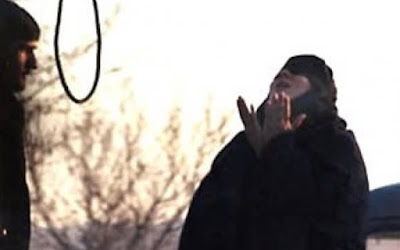 |
| Oklahoma death chamber |
The Oklahoma Department of Corrections released Tuesday the state's new execution protocol, which was revised after an April execution went awry and became a focal point in the national debate over whether or not the death penalty is cruel or unusual punishment.
The April 29 execution of Clayton Derrell Lockett lasted 43 minutes and sparked an Oklahoma Public Safety Department investigation, which included recommended changes to protocol.
Lockett was killed with a 3-drug cocktail never before used in the United States, and the new protocol allows the state to continue using the most controversial of the drugs, midazolam. It also allows the state to continue using a single IV in the femoral vein, a procedure the state Public Safety Department investigation found to be central to problems that occurred during the procedure.
Midazolam also was used in 2 recent problematic executions, 1 in Ohio and another in Arizona. The new protocol increases the amount of the drug by 5 times. It also requires the medical professional inserting a single vein IV be trained to perform the procedure. Traditional lethal injections in Oklahoma utilize 2 IVs, 1 in each arm.
A staff member also will be responsible for watching the insertion point during the procedure to ensure no problems occur. The lethal drugs used to kill Lockett collected in his tissue near the insertion point due to a poorly placed femoral IV, the state investigation found, and the large, swollen area went unnoticed for several minutes due to a sheet covering Lockett's groin.
The protocol also places a one hour time limit on the placement of the IV, after which the director will be required to contact the governor's office and advise on the possibility of a stay.
The state Corrections Department released the protocol late Tuesday without statement or comment. Director Robert Patton has declined to comment on the protocol, as recently as last week's Board of Corrections meeting, due to pending litigation.
Dale Baich, an attorney representing several death row inmates currently suing the state over its protocol, said the protocol still allowed the state to use experimental execution methods and allowed for less oversight.
"The protocol calls for less, not more transparency in executions, by limiting the number of media eyewitnesses and keeping information about the source and efficacy of the drugs from the prisoner," Baich said in an emailed statement.
In a hearing earlier this month in Baich's case, a federal judge expressed concern that the Corrections Department could not implement the changes and necessary staff training in time for the Nov. 13 execution of Charles Frederick Warner.
Source: The Oklahoman, October 1, 2014










